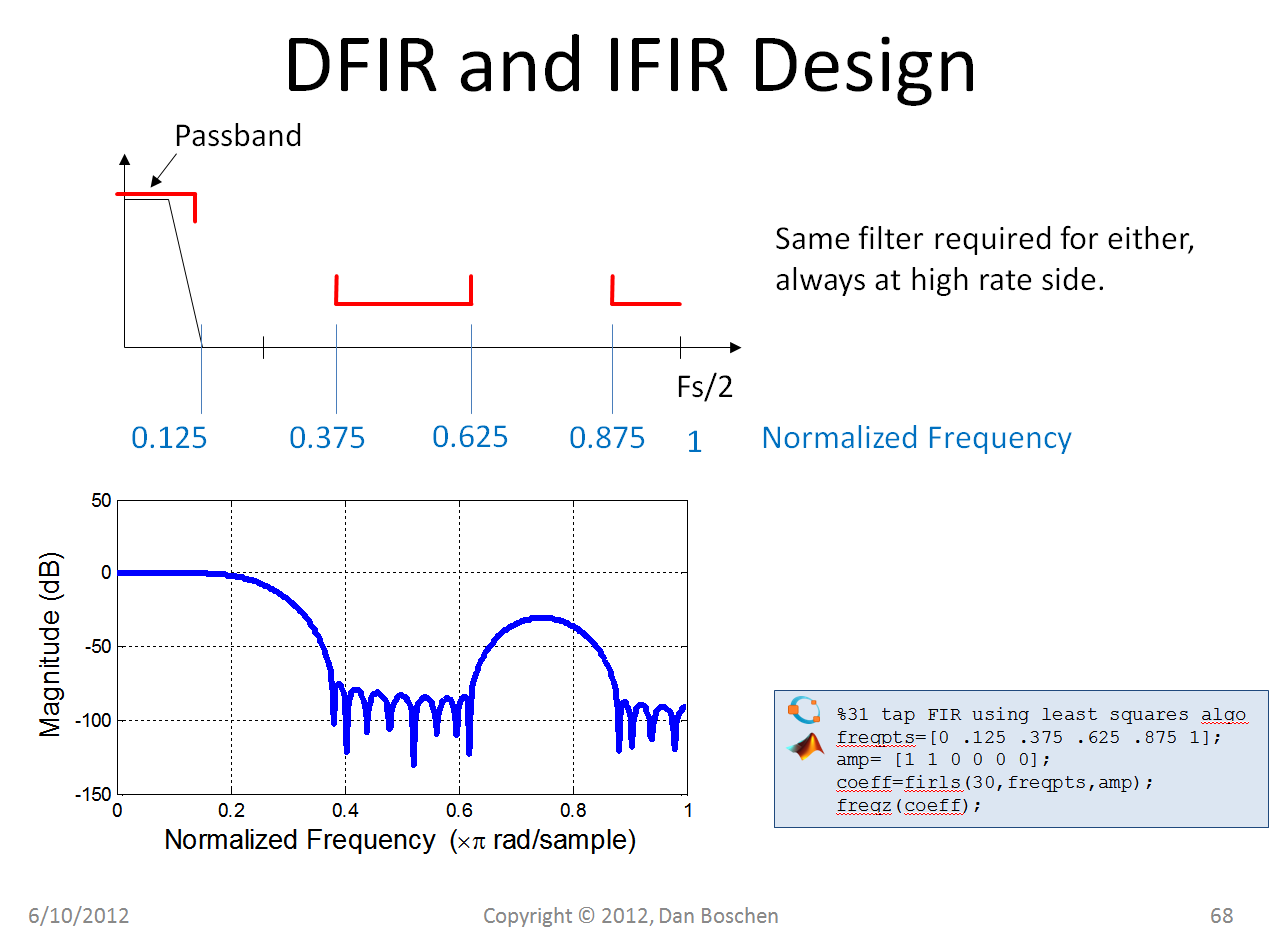Long time reader, first time poster. I have a few very simple questions that are troubling me and I am hoping that one of you guys can help me out.
Setup & Aim: I have a time series that I want to downsample, and I simply want to run a lowpass filter on it before doing so to avoid aliasing. I am using Python (SciPy) but it looks like MATLAB behaves similarly, neither are really relevant for these questions.
My original time series is sampled at $0.5\textrm{ ms}$ ($2000\textrm{ Hz}, f_{\rm Nyquist}=1000\textrm{ Hz}$) and I want to resample to $2\textrm{ ms}$ ($250\textrm{ Hz}, f_{\rm Nyquist}=250\textrm{ Hz}$), so I must apply an anti-alias filter that cuts off any frequencies $> 250\textrm{ Hz}$, and then downsample. So far, so good.
In Python, it looks like a Butterworth Filter is the way to go, which requires a normalised frequency $\omega_n$. My understanding is that in my case $\omega_n = 250\textrm{ Hz}/1000\textrm{ Hz} = 0.25$.
Now, what I don't understand and I cannot find any information on, is as follows:
What if my original time series ($f_s=2000\textrm{ Hz}$) had been upsampled from $1\textrm{ ms}$ ($f_s=1000\textrm{ Hz}, f_{\rm Nyquist}=500\textrm{ Hz}$)? There is no extra information between $500\textrm{ Hz}$ and $1000\textrm{ Hz}$ but I don't necessarily know that and I apply a Butterworth Filter with $omega_n = 0.25$ (instead of $\omega_n = 0.5$ for $1\textrm{ ms}$ sampling). Is it an issue? Am I misunderstanding how a Butterworth filter works?
My second question is something like "Why is this the preferred implementation of a low pass filter?" I am sure there are good reasons but I have used software in the past to just high cut filter my data knowing my new $f_{\rm Nyquist}$, so in my case. So in my case I would use something like $0-0-200-250\textrm{ Hz}$. Again, what am I missing? I know that maximum frequency that I want to keep.
Finally, one of the roots of my problem is that I sometimes have irregularly sampled data. I can run an interpolation to a regular time array but when doing this I tend to oversample, to avoid losing signal (This is where my first question comes in). Am I wasting my time? Should I just resample to the smallest time interval in my data?



